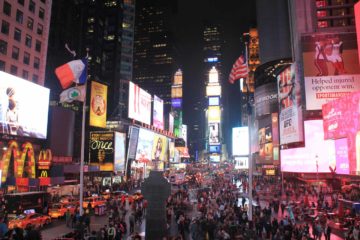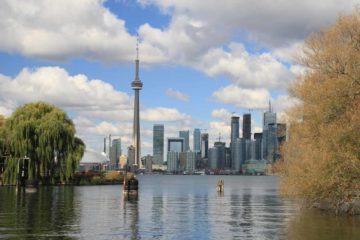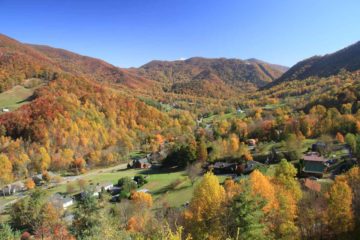About Passaic Falls (Paterson Great Falls)
Passaic Falls (also known as the Paterson Great Falls) was perhaps the most unusually-situated waterfall we could recall given that it was smack in the middle of a lot of urban developments that were close enough to New York City that we even entertained taking the subways in New York City and the PATH in New Jersey to get here. But after visiting this most unlikely of places to find an impressive waterfall, we learned that this place was also at the forefront of the American Industrial Revolution where hydro power was a well-recognized source of energy to power the machinery and the economy that would eventually transform a frontier into the modern day United States.
The history here was evident as there was a statue of Alexander Hamilton who was Secretary of the Treasury at the time as well as historical buildings around the falls. There were also other historical relics further downstream that we didn’t have time to visit. As for the significance of Alexander Hamilton, apparently he had a strong desire to develop Paterson into an industrial city in an attempt to fulfill a vision of making America economically independent from the British. Eventually, this desire and political backing resulted in Paterson becoming an early adopter of industrial might, eventually earning it the title of “Silk City” given its role in powering the textile industry at the time. During our visit, we saw restored and aged remnants of the industry that was once here (even without seeing the rest of the relics further downstream). These relics provided the reason for the restoration and preservation of the Great Falls of Paterson, which was recently the Paterson Great Falls National Historical Park (part of the US National Parks System) in 2011.
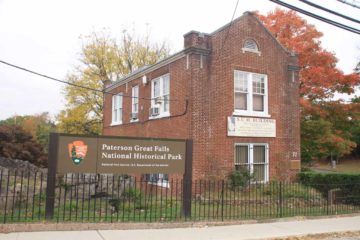
Our visit to the Passaic Falls merely revolved around the main overlook near the car park (see directions below), where we were able to see the falls nestled in a short gorge beneath what appeared to be some kind of pipe spanning the gorge. Neighboring the gorge and the falls was the SUM (Society for Useful Manufactures, which was Alexander Hamilton’s investment group) Hydroelectric Plant. The main overlook area was also where we noticed the Alexander Hamilton statue.

We eventually went onto the bridge next to the pipes spanning the gorge carved out by the Passaic River and the Great Falls. The view from the bridge was what you see in the photograph at the top of this page, and we thought it was probably the prettiest view of the falls that we were able to get. On the other side of the bridge, there was a little park-like area where some locals were chilling out either talking amongst themselves, trying their luck at fishing the Passic River, or even checking out the furthest overlook nearest to the head of the gorge by the falls.
We only spent about 15 minutes or so at this bridge section (probably another 35 minutes or near the main overlook near the car park and SUM Hydro building) because admittedly, this area was a little bit rough around the edges during our visit. We were content to check out the best views of the falls from the bridge, but we didn’t go all the way across it as the thought of our safety (especially with Tahia coming with us) definitely crossed our minds. We weren’t sure about what some of the group of loiterers were doing there though the smell of marijuana smoke was strong (possibly suggesting some drug activity taking place here). In a way, I guess these observations were kind of the good with the bad that we had to accept as part of an attractive place encroached by urban blight. I’m sure lessons could be learned by city planners and developers regarding the impact that such developments have on natural attractions (i.e. resources) despite their lure of economic gains.
In any case, even with the urban blight, we were glad to have visited Passaic Falls as it definitely expanded our minds, taught us a little more about American history, and demonstrated the resiliency of Nature despite man’s efforts to exploit it.
Related Top 10 Lists
No Posts Found
Trip Planning Resources
Nearby Accommodations
This content is for members only. See Membership Options.Featured Images and Nearby Attractions
This content is for members only. See Membership Options.Visitor Comments:
Got something you'd like to share or say to keep the conversation going? Feel free to leave a comment below... The falls are a lot more powerful after the snow melt (Passaic Falls) March 17, 2015 12:31 am - I visited these falls yesterday. It was a nice sight to see. With the snow melt the falls were a lot more powerful. It was one single curtain of water all the way across. I never knew such a huge waterfall would be right here in Jersey. Unfortunately like you mentioned the area isn't so… ...Read More
The falls are a lot more powerful after the snow melt (Passaic Falls) March 17, 2015 12:31 am - I visited these falls yesterday. It was a nice sight to see. With the snow melt the falls were a lot more powerful. It was one single curtain of water all the way across. I never knew such a huge waterfall would be right here in Jersey. Unfortunately like you mentioned the area isn't so… ...Read MoreVisitor Reviews of this Waterfall:
If you have a waterfall story or write-up that you'd like to share, feel free to click the button below and fill out the form...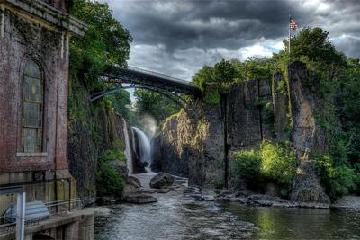 Great Falls in Paterson, NJ January 11, 2012 3:53 pm - The power of this water fall was used in the 1790s to make Paterson the first industrialized city in the US and it helped America gain economic independence from Britain. It looks cool too! ...Read More
Great Falls in Paterson, NJ January 11, 2012 3:53 pm - The power of this water fall was used in the 1790s to make Paterson the first industrialized city in the US and it helped America gain economic independence from Britain. It looks cool too! ...Read More
